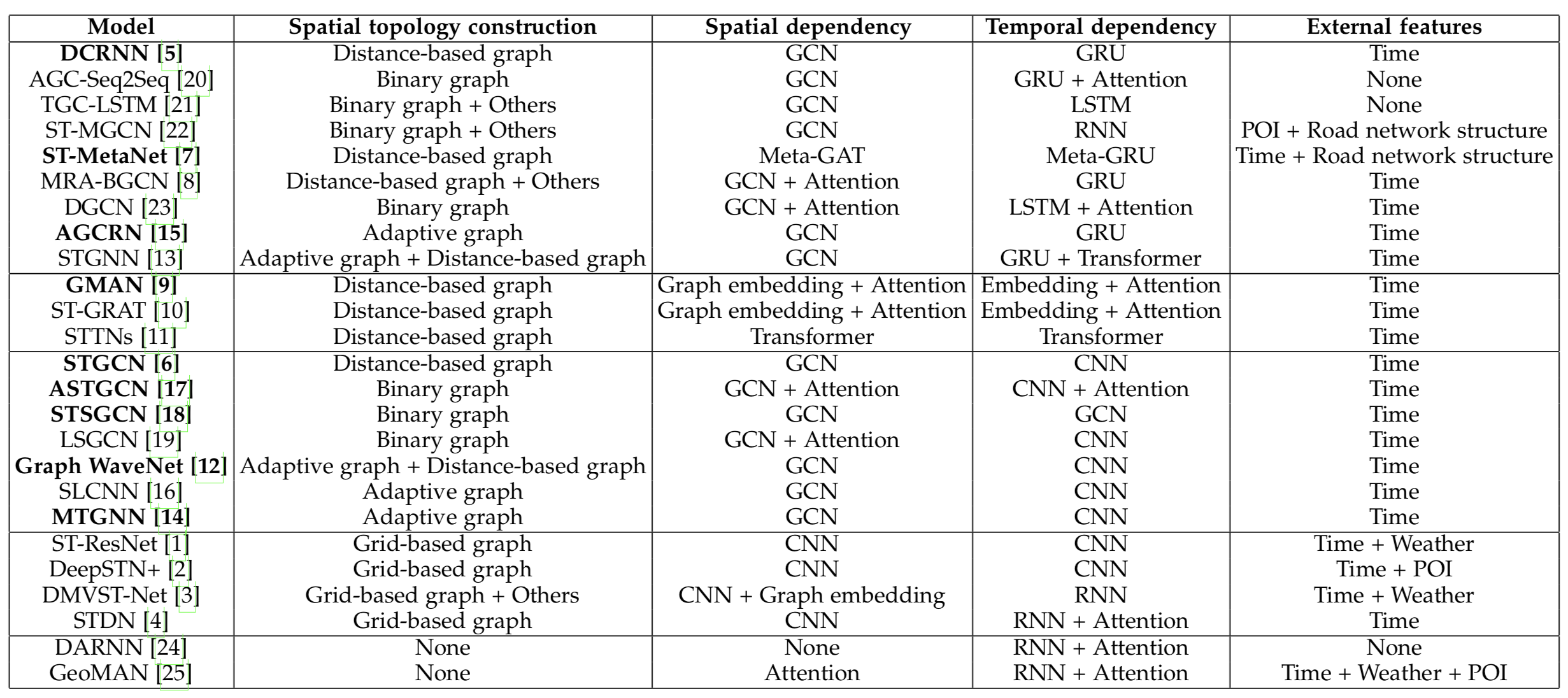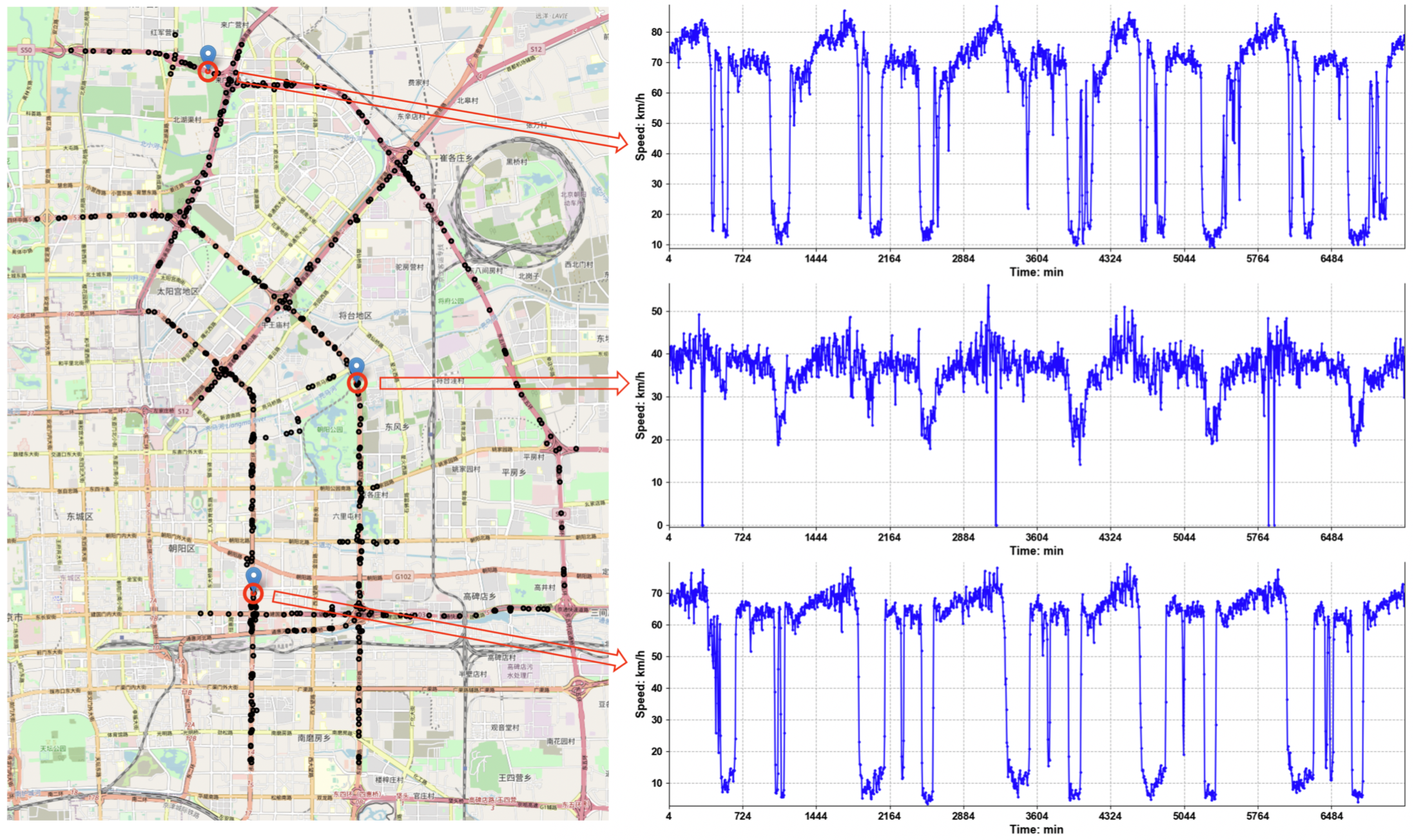This is the origin Pytorch implementation of DGCRN together with baselines in the following paper:
- Fuxian Li, Jie Feng, Huan Yan, Guangyin Jin, Depeng Jin and Yong Li. Dynamic Graph Convolutional Recurrent Network for Traffic Prediction: Benchmark and Solution.

Figure 1. The architecture of DGCRN.
We classify the related works based on four parts: spatial topology construction, spatial dependency modeling, temporal dependency modeling and external features, as shown in the figure below, where the baselines in the benchmark are In bold type.

Figure 2. The classification of related works .
- Python 3.6
- numpy == 1.19.4
- pandas == 1.1.1
- torch >= 1.1
- mxnet == 1.4.1
- tensorflow >= 2.4.0
Dependencies can be installed using the following command:
pip install -r requirements.txt-
The description of METR-LA dataset and PEMS_BAY dataset please refers to the repository of DCRNN.
-
The NE-BJ dataset used in the paper can be downloaded, which will be available soon.

Figure 3. Road segment distribution of the NE-BJ dataset.

Figure 4. Comparisons among datasets.
Commands for training model:
python train_benchmark.py --model 'model_name' --data 'data_name' >> log.txt More parameter information can be found in train_benchmark.py or the file in the directory of corrsponding model. You can refer to these parameters for experiments, and you can also adjust the parameters to obtain better results.

Figure 5. Results of benchmark.
If you find this repository useful in your research, please consider citing the following paper:
@misc{li2021dynamic,
title={Dynamic Graph Convolutional Recurrent Network for Traffic Prediction: Benchmark and Solution},
author={Fuxian Li and Jie Feng and Huan Yan and Guangyin Jin and Depeng Jin and Yong Li},
year={2021},
eprint={2104.14917},
archivePrefix={arXiv},
primaryClass={cs.LG}
}
This repository will be updated and the code of DGCRN will be available soon.
Moreover, the PyTorch version of baselines like GMAN and STSGCN is on the way~


